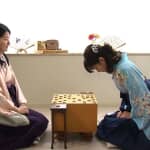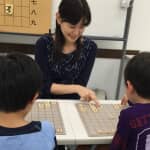Child-raising Shogi 3 March 2017
Five Challenges That Young Children May Face and How to Overcome Them
There are many activities available for children such as baseball, soccer, smart-phone games and so forth. Among these activities, not a few parents hope that their children play Shogi because they consider that Shogi cultivates children’s thinking skills and helps children to learn manners and courtesy.
If your children have already reached school-age, I think there are sufficient chances for them to learn and enjoy Shogi. Some friends may play Shogi or a school teacher may be able to teach how to play Shogi to your children. However, if your children are below school-age, there is a different story. First of all, it is doubtful if young children show interest in Shogi which looks old-fashioned. Assuming that they are interested in Shogi, then, the next questions are as follow.
Can young children learn difficult Chinese characters and complicated rules?
How can we teach them Shogi? There is a pile of problems for children below school-age to start Shogi.
So, today, I would like to share some awareness I gained through teaching at Shogi classes. I’d like to speak about some tips for young children to show interest and continue Shogi, some hurdles they may encounter, and how to overcome those.
Shogi is actually very fun and full of charms. I feel it is such a waste if your children quit Shogi simply because they are still young. I don’t know how much help I could be, but hope that you can find something useful in today’s article if you consider letting children start Shogi.
Hurdle 1: Children do not show interest in Shogi.
Solution: Dads and Moms play Shogi first.
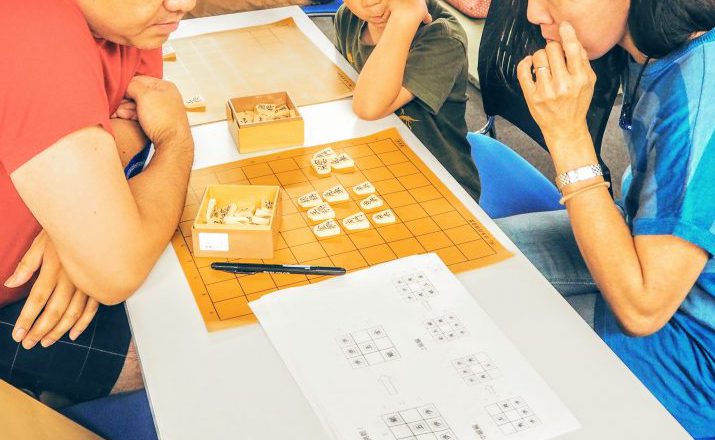
It is very hard to make children do what they are not interested in such as household chores.
I myself feel so, and I created a game called “cleaning up competition” so that my three children clean up while enjoying the game. On the other hand, children show amazing concentration when they are interested in something.
So, I recommend that dads and moms play Shogi first and let children see that you are enjoying it. Young children especially like to copy parents very much.
“Oh, my piece is captured.”
If you play and enjoy a game of Shogi saying so, I am sure that your children naturally feel like joining you. They may not be interested in Shogi, but are very curious about moms and dads.
Children start Shogi because they want to play with moms and dads, but gradually, I would say that they come to enjoy Shogi itself. It is important to create atmosphere and a chance for children to become interested in Shogi.
Hurdle 2: Children cannot read Chinese charters, can they?
Solution: Parents explain Chinese characters with their features.

You may think that children below school-age cannot read Chinese characters or even Hiragana/Katakana. However, I can say, “Don’t worry” through my own experiences at Shogi classes.
Children around 5-years-old seem to recognize Chinese characters as a picture, and can jump over this hurdle quite easily, surprisingly. In case children have difficulties in remembering Chinese characters, you can explain their characteristics as below.
“Kin (gold) has a big roof.” “Gin (silver) has a small roof.” “Kei (knight) has four horizontal lines.”
For your information, I heard that foreigners experience more trouble to distinguish Chinese characters than small children. Chinese characters look like a worm to foreigners.
Hurdle 3: Children become tired of Shogi lesson soon.
Solution: They can play easy games with Shogi equipment.
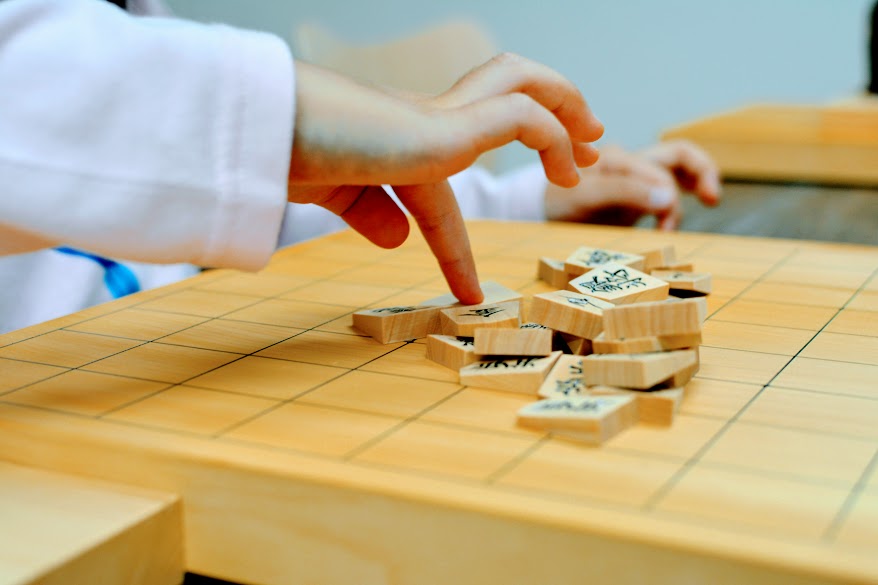
I think it is very difficult for young children to endure something boring. Children are very honest to show their feelings. When I just launched my Shogi class, I used to give a long lecture about Shogi piece moves to children, and found some of them yawning. I really felt that I needed a technique so that children can enjoy learning Shogi such as adding some fun stories between lessons.
“Learning Chinese characters” may be relatively easy, but piece moves and rules are different. No child can fully understand them by just one lesson. Furthermore, children lose interest if they cannot remember them despite being taught repeatedly. Children come to regard Shogi “not fun.”
So, I recommend that you include some games and playful activities in between lessons when you teach children Shogi, instead of making them cram with rules and piece moves at first.
We have introduced games such as Shogi puzzle, Tag chasing king, Mountain pull-down and so forth on this blog. Children can be familiarized with piece moves in Shogi puzzle and Tag chasing king, and learn the values of pieces in Mountain pull-down. These games can help children to relax and also gain some knowledge about Shogi.
Hurdle 4: Children cannot maintain concentration.
Solution: Play a short game.
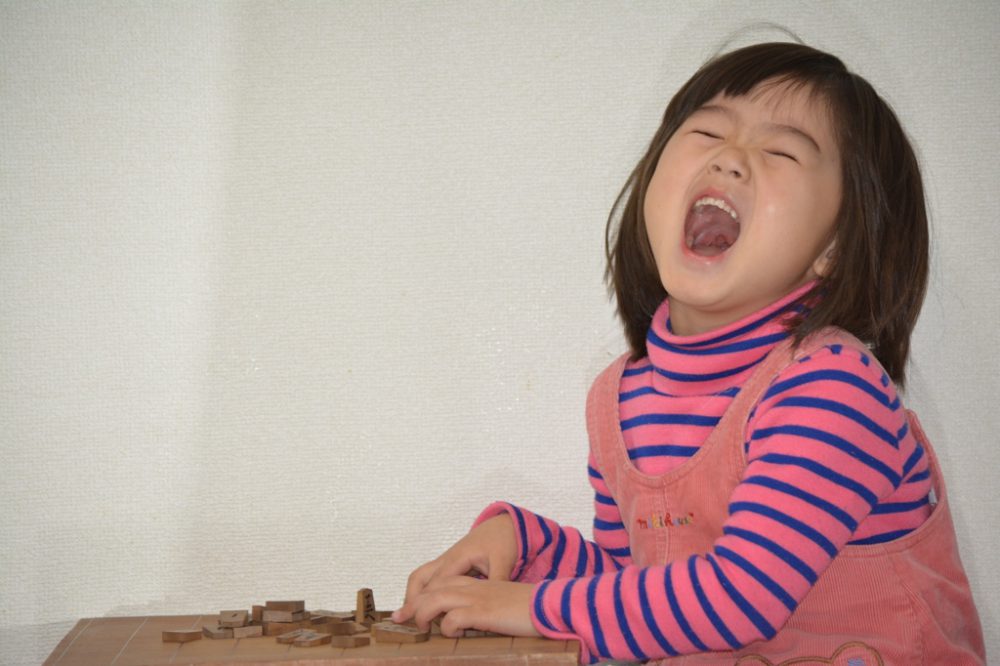
Concentration is required for Shogi, but it is difficult for young children to keep focused for a long period of time. Since children are curious about everything, it is hard for them to stay attentive at only one thing. However, I would say what is important about concentration is its depth rather than its length. I think it is satisfactory if a child can sit and think facing Shogi board even just for five minutes. It is excellent if he/she can extend the concentration period gradually.
We cannot read the next moves while waiting for the opponent’s move until we reach a certain level. Moreover, it is basically infeasible that a beginner sits and plays a game alone silently at home. Thus, it is good enough if a child can concentrate even just for a short time, and parents should try not to extend a game time for children.
When it is still difficult to stop a game, you can take a picture of the board with a smart phone and say, “So much for today, and let’s continue this for some other time.”
Hurdle 5: I don’t know teaching methods and orders of Shogi.
Solution: You can read Shogi textbooks for reference.
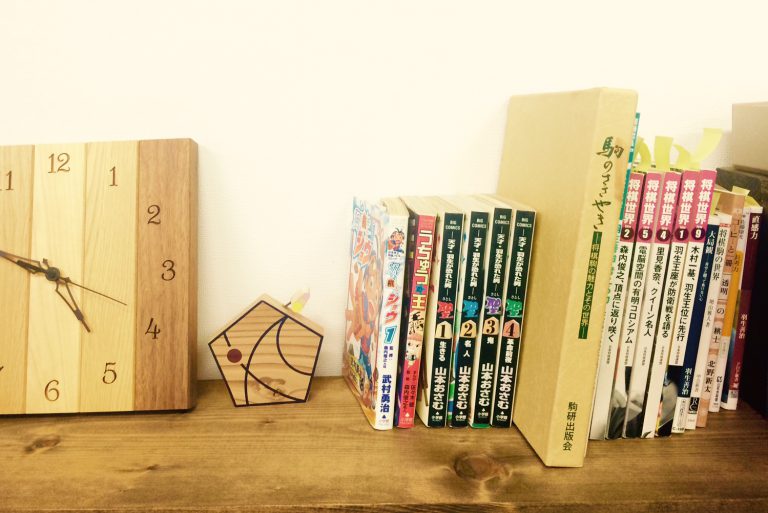
This hurdle is more like for grown-ups rather than children. I often hear comments such as “I don’t know how to teach Shogi to children” or “I don’t know the orders to teach Shogi rules” from mothers who hardly know about Shogi.
It is surely difficult to systemically learn Shogi unless there is a Shogi class or a practice hall in the neighborhood, or family members are Dan (a kind of ranks given to high-ranked players) holders.
So, I recommend that you read Shogi books and textbooks written for a novice player in case you don’t have environment to learn Shogi. You may not be familiar to Shogi books and textbooks unless you play Shogi regularly. However, you can find quite a few Shogi books and textbooks appropriate for your level if you go to libraries and fairly large-sized book stores.
For your information, I-tsu-tsu’s Shogi Lesson Book for Beginners (a set of five volumes, currently volume 1 and 2 are available) is for children to start Shogi and their mothers. We have included various ideas and tips for parents and children to enjoy Shogi together. We hope that parents also start learning Shogi with children in case parents are not familiar with Shogi.
Today, we have introduced several ideas and tips for children below school-age to enjoy and continue Shogi. How was it? We are more than delighted if more and more children including very young ones have a chance to start and play Shogi.


